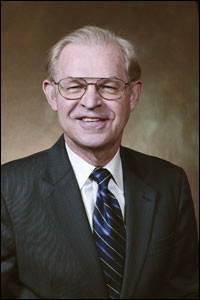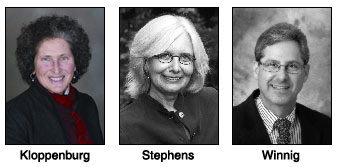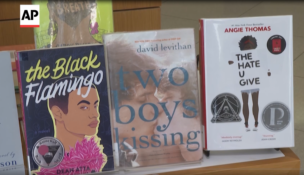Candidates explore alternative advertising
By: Jack Zemlicka, [email protected]//February 8, 2011//

Public financing hasn’t exactly forced state Supreme Court candidates to pinch pennies, but the alternative to raising money has made inexpensive forms of campaigning, like social networking websites, more attractive.
All four candidates running for a 10-year term on the court have a campaign presence on Facebook and some have utilized Twitter to attract and inform voters.
“Part of what I’m trying to do in the campaign is be very cost-effective, particularly at the beginning because we have a very low budget campaign,” said Madison attorney Joel F. Winnig.
Winnig, along with incumbent Justice David T. Prosser and Assistant Attorney General JoAnne F. Kloppenburg, applied for and received $100,000 in state money to spend before the Feb. 15 primary.
Marla J. Stephens, Appellate Division Director of the Wisconsin State Public Defender, opted to solicit donations the traditional way and raised approximately $12,000 through the end of 2010, according to her Jan. 31 finance report filed with the Government Accountability Board.
But regardless of where their campaign contributions are coming from, the candidates agreed that social networking sites are a budgetary asset in a race which won’t see the same fundraising disparity as in recent years.
In the 2009 Supreme Court race, incumbent Justice Shirley S. Abrahamson raised and spent almost $1.5 million compared to less than $200,000 by her opponent, Judge Randy R. Koschnick.
“We’re on a limited resource campaign, so we’ve got to look at doing anything and everything to stretch our dollar,” said Prosser’s campaign manager Brian Nemor.
That includes regular postings on the justice’s campaign Facebook page advertising appearances or endorsements.
Like his fellow candidates, Prosser admitted that he isn’t an online social networking aficionado, but should he survive the primary, he expects to increase his participation in posting online.
Stephens has links to radio and television appearances on her Facebook page and said the social networking site is an effective way to appeal to younger voters, more so than with traditional campaign commercials or ads.
“It’s not just cost effective,” she said. “In many instances it’s the most effective way to reach a certain demographic.”
 Other attractive attributes of campaigning on Facebook are the instant feedback from the public and the ability to respond to postings.
Other attractive attributes of campaigning on Facebook are the instant feedback from the public and the ability to respond to postings.
Kloppenburg’s campaign manager Melissa Mulliken said their objective with a Facebook campaign is to engage people and also use it as a way to recruit volunteers.
“We just had two people post on Facebook that they wanted to volunteer and those are people we probably wouldn’t have reached otherwise,” Mulliken said. “We don’t use feedback as a focus group, but we take their input seriously.”
Winnig said the interactive nature is something that cannot be duplicated through a campaign commercial.
Plus, it makes him seem cool to his kids.
“There seems to be this viral effect that when something happens you are able to communicate it pretty easily and it makes it so people can communicate on your behalf,” he said.
But how effective a campaign tool social networking sites will be in an election which historically generates voter turnout in the single digits remains to be seen.
While the candidates are embracing social media as a way to reach voters, they said it won’t replace traditional campaign promotion.
The fact that the public seeks out information on social media sites “segments itself” from other forms of advertising, Nemor said, so Tweets and Facebook updates won’t reach as broad a base as television, radio or print.
“I think it’s a complement and not a replacement,” he said.
Similarly, Stephens said she doesn’t want to alienate a segment of voters who are not computer savvy by abandoning advertisements in other media.
Stephens, like her opponents, didn’t want to disclose advertising strategy, other than to say she’d be utilizing “all the tools a good campaign has to use.”
Part of that will include a continued emphasis on Facebook, which she hopes will prompt more people to head to the polls.
“I think the goal is to at least get people out and vote on Feb. 15,” she said. “I think this will help with turnout.”
Jack Zemlicka can be reached at [email protected].
Legal News
- Gov. Evers seeks applicants for Dane County Circuit Court
- Milwaukee man charged in dismemberment death pleads not guilty
- Democratic-led states lead ban on the book ban
- UW Madison Professor: America’s child care crisis is holding back moms without college degrees
- History made in Trump New York trial opening statements
- Prosecutor won’t bring charges against Wisconsin lawmaker over fundraising scheme
- Republican Wisconsin Senate candidate says he doesn’t oppose elderly people voting
- Vice President Harris to reveal final rules mandating minimum standards for nursing home staffing
- Election workers fear threats to their safety as November nears
- Former law enforcement praise state’s response brief in Steven Avery case
- Eric Toney announces re-election bid for Fond du Lac County District Attorney
- Former Wisconsin Democratic Rep. Peter Barca announces new bid for Congress
WLJ People
- Power 30 Personal Injury Attorneys – Russell Nicolet
- Power 30 Personal Injury Attorneys – Benjamin Nicolet
- Power 30 Personal Injury Attorneys – Dustin T. Woehl
- Power 30 Personal Injury Attorneys – Katherine Metzger
- Power 30 Personal Injury Attorneys – Joseph Ryan
- Power 30 Personal Injury Attorneys – James M. Ryan
- Power 30 Personal Injury Attorneys – Dana Wachs
- Power 30 Personal Injury Attorneys – Mark L. Thomsen
- Power 30 Personal Injury Attorneys – Matthew Lein
- Power 30 Personal Injury Attorneys – Jeffrey A. Pitman
- Power 30 Personal Injury Attorneys – William Pemberton
- Power 30 Personal Injury Attorneys – Howard S. Sicula











